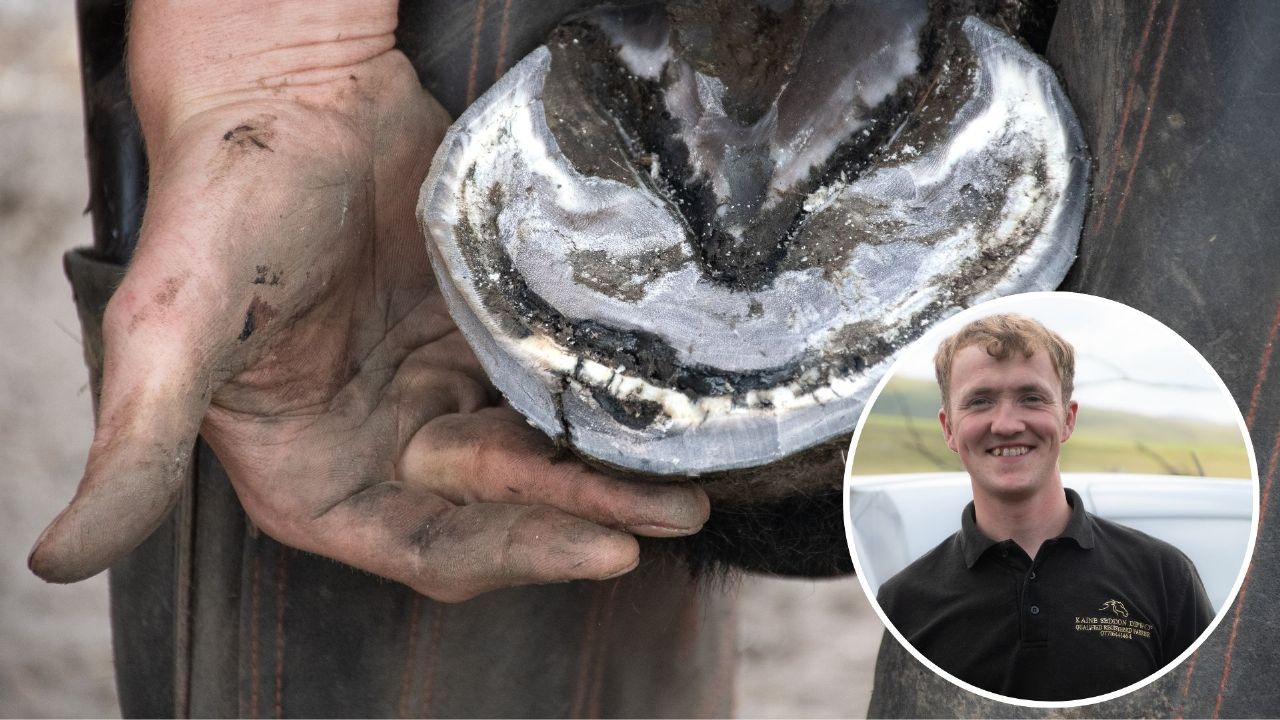10 years of Simple System HayCare!
During its 10 years so far, it has become apparent that HayCare is so much more than a hay replacer...

In the equestrian world there may be no truer phrase than ‘‘no foot, no horse’’. To help our horses stay foot sound this winter, we quizzed farrier, Kaine Seddon DipWCF.
What are the most common issues you see during winter? I will see abscesses week in week out during the winter. They can be a painful problem for horses. Thrush is another common issue year round, but it is usually more prevalent during winter.
Why do horses get hoof abscesses? A hoof abscess is formed when bacteria is trapped in the hoof, leading to a build up of pus (dead white blood cells) within the hoof capsule. There are many things that can cause bacteria to penetrate the hoof; a small stone trapped in the white line, standing on a sharp object, or even a chip or crack in the hoof.
How do you know if a horse has an asbscess? Hoof abscesses can be very painful and only a vet can make a diagnosis, so if you suspect an abscess, please give your vet a call straight away.
Signs that your horse may have an abscess are: reluctance to bear weight on one particular foot, sudden onset of lameness, which can be anything from mild to severe, and a notably warm hoof.
Once diagnosed, the vet will suggest the best method of treatment. This can include wet poulticing to help draw out the infection through the bottom of the hoof, and in some cases the vet may ask the farrier to pare away a small area of the hoof to help encourage drainage.
How can we help prevent hoof abscesses? Good hoof hygeine is important. Pick the feet out daily and keep them washed and clean - even if they are outkept in the field.
Warm water with some Organic Cider Vinegar is ideal for washing hooves as it has anti-bacterial properties. Once clean, inspect each hoof carefully. Check for any chips, cracks or bruising and pay extra attention to the white line as this is where the majority of abscesses occur.
Applying hoof oil to clean, dry hooves can be beneficial. Apply underneath the hoof, as well as to the exterior hoof wall. This keeps the hoof moisturised and can prevent cracking as well as helping to repel water and dirt.
You also mentioned thrush... Yes, thrush in horse's hooves can be very common. It again is a bacterial issue and it can be more prevalent during the wetter months. Wet, muddy pasture is a prime culprit, so ensure turned out horses have somewhere dry to stand.
Horses that spend more time stabled can also be prone to thrush. Wet or soiled bedding is a prime breeding ground for the bacteria. Also, when movement is restricted (i.e. spending longer periods standing in the stable), there is less wear on the hoof, affecting blood flow to the feet, making the horse more prone to infection.
How can you tell if your horse has thrush? The smell! Thrush has a foul smelling black discharge that comes from the frog, and this discharge can often be seen in the collateral groove. The frog itself can also become soft and the sole can become chalky - although this doesn’t happen in every case.
Can thrush be prevented or managed? Thrush is an anaerobic bacteria that thrives when there is little to no air flow. Exposing the bacteria to the air by keeping the feet well picked out is essential.
Are there any other common problems you deal with during winter? Not a hoof problem, but one that farriers are seeing more are leg problems like mud fever, mallenders, sallenders and CPL. Each of these conditions can be painful for the horse and so can make trimming and shoeing more difficult. If your horse is prone to any of these conditions, make sure your farrier is aware so they can make a plan with you, and your vet if necessary, to help keep them comfortable.
A snippet of advice for all horse owners? Most issues can be avoided by inspecting and cleaning hooves daily and keeping to your regular farrier appointments.
Our pick of 'farrier favourite' feeds...
MalleMash - A ‘one bag’ feed which is very popular for cobs and feathered breeds, and well-suited to those prone to dry or itchy skin.
Pure Ocean Seaweed - A natural source of amino acids and vitamins. Ideal for promoting strong hooves.
Brix - Forage blocks, useful for feeding whilst waiting for the farrier to arrive. Feed from the ground for a tasty, enriching chew. Available in three forages, grass (MeadowBrix), lucerne (Lucie Brix), and sainfoin (Sainfoin Brix).
If you require dietary advice for your horse, contact the Simple System Feed Line on 01728 604 008, or request a Feed Plan here.
During its 10 years so far, it has become apparent that HayCare is so much more than a hay replacer...
Grass has the potential to grow all year, which is different from many other plants. Certain things are necessary for this growth, but if they are not met, the grass will be dormant, waiting for conditions to improve.Â
Rain fall can trigger growth akin to a spring flush, especially if temperatures are high. Even whilst true spring may be in the past, the risk for those prone to laminitis will rise.